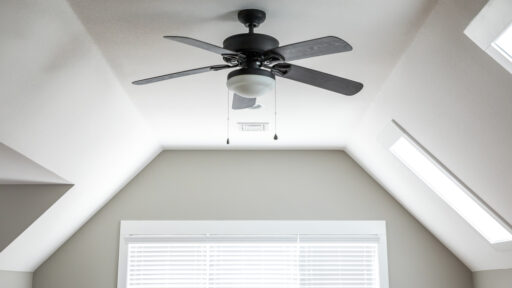Layering sheer curtains with heavier drapes transforms your windows from basic coverings to dynamic design elements. This technique balances light control, privacy, and aesthetics—letting you soften harsh sunlight, add texture, and elevate any room’s style. Here’s how to master the art of layering, step by step.
1. Material & Style Pairing: Build Your Foundation
Choose fabrics that complement each other functionally and visually:
For layered sheer, opt for lightweight, light-diffusing fabrics like:
Linen or linen blends: Natural texture for coastal, farmhouse, or minimalist styles.
Polyester or synthetic sheers: Affordable, low-maintenance, and ideal for high-sun areas (e.g., west-facing windows).
Embroidered or patterned sheers: Add delicate detail (e.g., florals or geometrics) for elegance.
Pro tip: you might not be able to find the perfect color & design of sheer curtains you like for your home, and custom sheer curtains can be a choice.
For outer Layer (Drapes), pair sheers with heavier, light-blocking fabrics:
Velvet or thick cotton: Adds warmth and luxury (perfect for bedrooms).
Blackout-lined linen or polyester: Blocks light while maintaining a relaxed look (ideal for living rooms) , view more drape options at UniCurt.

Pro Styling Tips:
Mix solids and patterns: Pair solid sheers with patterned drapes (or vice versa) for depth without chaos .
Color harmony: Choose sheers in neutrals (white, oatmeal) to soften bold drapes. For monochromatic spaces, use varying shades of one color (e.g., ivory sheers + taupe drapes).
Texture contrast: Combine gauzy sheers with nubby linen drapes for tactile interest.
2. Curtain Length & Heading Styles: Polish the Details
Length affects both function and elegance, especially for layered sheer & drapes.
Sheers: Use the “kiss” length (barely touching the floor) for a clean, tailored look.
Drapes: Choose based on formality:
Float (½” above floor): Practical for kitchens/pets.
Kiss (touching floor): Timeless and versatile.
Puddle (2–4″ pooled): Formal spaces only (e.g., dining rooms).
Heading styles ensure smooth operation
Sheers: Hidden back tabs or rod pockets create soft, flowing folds.
Drapes: Pinch pleats or pencil pleats minimize light gaps and support heavier fabrics.

3. Room-by-Room Functionality: Match Layers to Your Needs
Different spaces demand unique layering strategies:
Room | Sheer Recommendation | Drape Recommendation | Why It Works |
|---|---|---|---|
Living Room | Light-filtering linen or cotton | Medium-weight linen/wool blend | Softens light while adding texture; sheers maintain daytime privacy. |
Bedroom | UV-protective polyester | Blackout velvet or triple-weave fabric | Sheers filter morning light; blackouts enable total darkness for sleep. |
Kitchen | Washable synthetic or cotton | Roman shades (instead of drapes) | Sheers resist humidity/stains; shades sim |
Special Considerations:
Nurseries/Kids’ Rooms: Use cordless shades + machine-washable sheers for safety and ease.
Home Offices: Layer light-filtering roller shades under drapes to reduce glare on screens.
4. Installation Hardwares Systems: Hang Layers Like a Pro
Double Rod System (Classic & Flexible)
How it works: Two separate rods mounted on the same brackets:
Inner rod: Holds sheers closest to the window.
Outer rod: Positioned 3–5″ forward for drapes.
Why choose it: Lets you open/close each layer independently. Perfect for daily light control (e.g., sheers open all day + drapes closed at night).
Install tip: Extend rods 10–15″ wider than the window frame. Mount 4–6″ below the ceiling to fake taller windows.
Double-Track System (Sleek & Space-Saving)
How it works: A single ceiling-mounted track with two gliders (no exposed rods). Sheers and drapes slide smoothly on parallel rails.
Why choose it:
Ultra-clean look (hides hardware).
Frees up wall space—no bulky brackets.
Ideal for tight spaces or modern/minimalist rooms.
Install tip:
Requires ceiling mounting (check joists!).
Use tracks labeled “for layered curtains” (e.g., IKEA Vidga or custom brands like Silent Gliss).
Insert image 3
Single-Rod Shortcuts (Renter-Friendly)
Clip rings: Hook sheers + drapes to one rod via stacked rings.
Sewn panels: Sheers stitched to blackout drapes (limits adjustability).
Best for: Temporary spaces or small windows.
Pro Checks for Any System:
✅ For wide windows (>30″): Add center brackets/track supports to prevent sagging.
✅ Weight test: Ensure rods/tracks support fabric weight (velvet = heavier than linen!).
Final Thoughts: Why Layering Works
Layering sheers with drapes solves multiple problems at once:
Light Control: Filter harsh sun with sheers; block it completely with drapes.
Energy Efficiency: Trapped air between layers insulates against heat/cold, cutting energy costs.
Style Flexibility: Swap drape colors/textures seasonally without replacing sheers.
Privacy: Maintain daytime obscurity with sheers; add night privacy with drawn drapes.
Start Simple: Begin with neutral sheers and one set of drapes. As confidence grows, experiment with patterns, textures, or motorized rods for effortless adjustments. The goal? Windows that work as hard as they shine.








